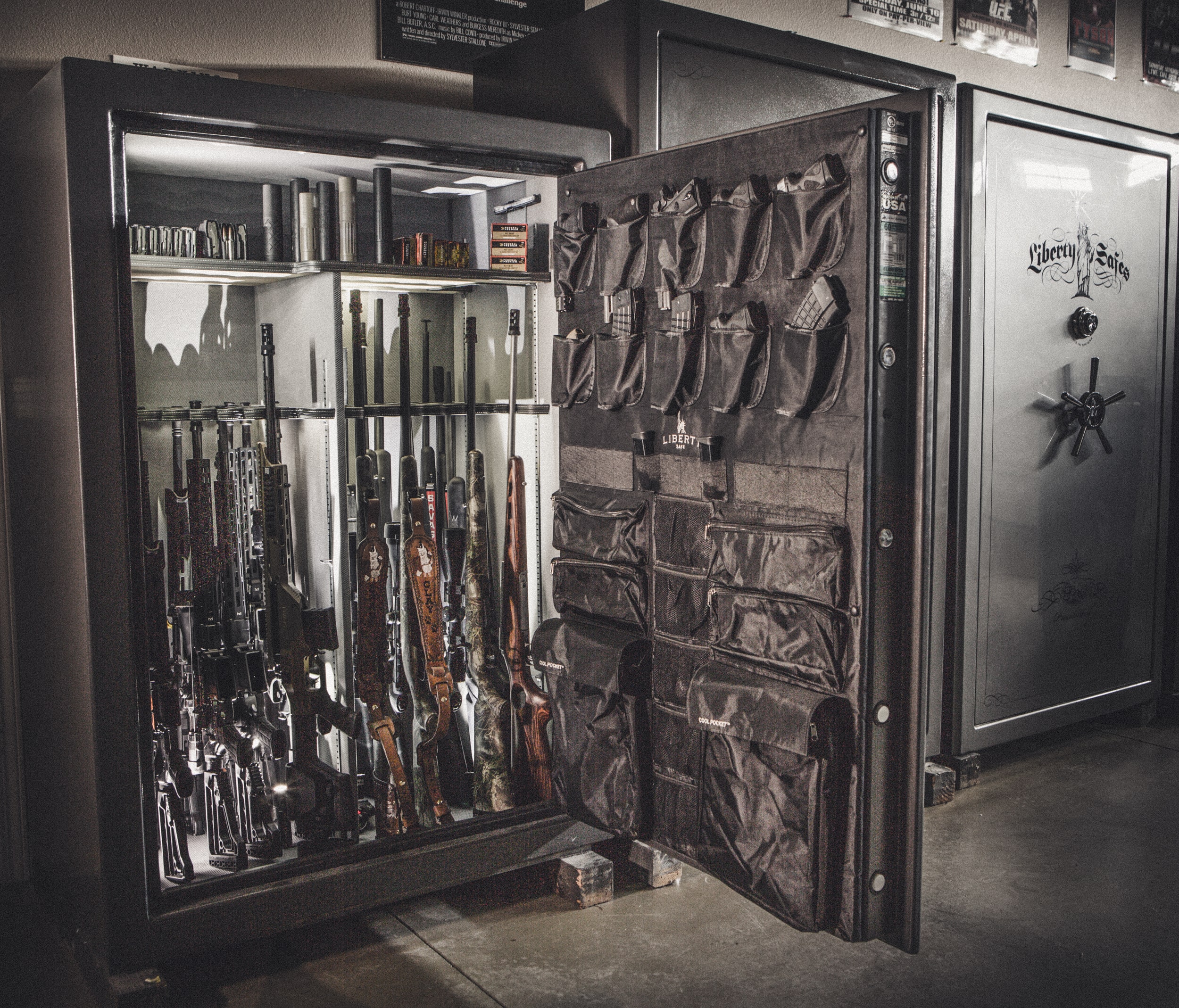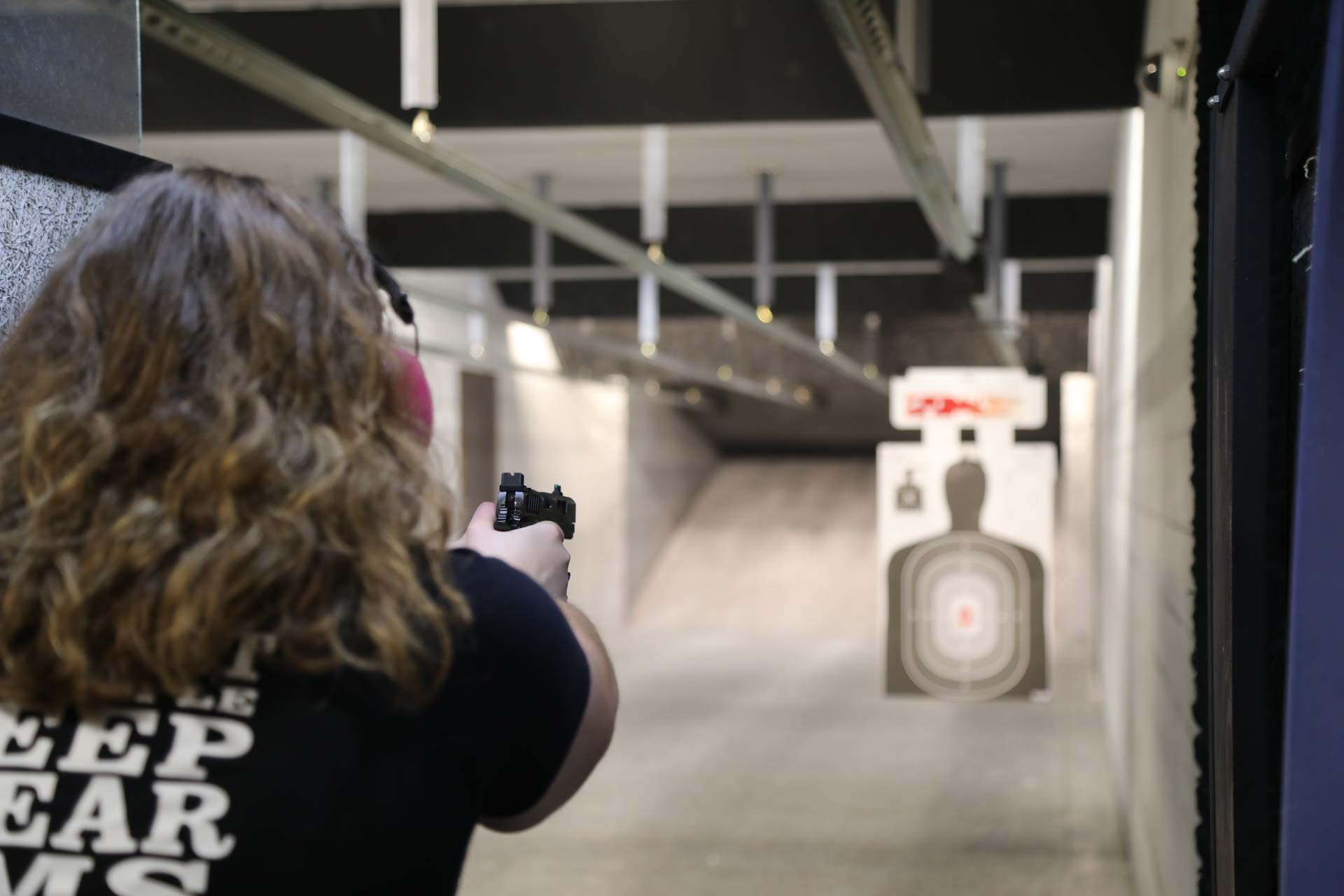Exploring Second Amendment Sports: A Comprehensive Guide To Firearms, Freedom, And Fun
Second Amendment Sports has become a cornerstone for enthusiasts who cherish the right to bear arms while engaging in recreational and competitive activities. Whether you're a seasoned shooter or a newcomer to the world of firearms, this unique blend of sport and tradition offers something for everyone. From clay pigeon shooting to precision rifle competitions, Second Amendment Sports encapsulates the spirit of freedom, responsibility, and camaraderie. With its growing popularity, it's no wonder that more people are drawn to this dynamic intersection of constitutional rights and athletic pursuits.
At its core, Second Amendment Sports is about more than just firearms. It’s about fostering a community where individuals can exercise their constitutional rights in a safe, respectful, and enjoyable environment. Participants often describe the experience as empowering, allowing them to connect with history, develop new skills, and build lasting friendships. The activities range from casual target practice to high-stakes competitions, ensuring there's always a challenge to meet and a skill to master.
As interest in Second Amendment Sports continues to grow, so does the need for education, awareness, and advocacy. Understanding the nuances of firearm safety, legal regulations, and the cultural significance of these sports is essential for anyone looking to get involved. Whether you're curious about the origins of these sports or eager to dive into the action, this guide will walk you through everything you need to know to become a confident and informed participant in the world of Second Amendment Sports.
Read also:Romeo Sagum Catacutan A Comprehensive Biography
Table of Contents
- What Are Second Amendment Sports?
- How Did Second Amendment Sports Originate?
- Popular Types of Second Amendment Sports
- Why Are Second Amendment Sports Important Today?
- How Can You Get Started in Second Amendment Sports?
- What Are the Safety Guidelines for Second Amendment Sports?
- How Does Second Amendment Sports Promote Responsibility?
- Frequently Asked Questions About Second Amendment Sports
What Are Second Amendment Sports?
Second Amendment Sports refer to a wide array of activities that involve the use of firearms, often in competitive or recreational settings. These sports are deeply rooted in the principles of the Second Amendment of the United States Constitution, which protects the right to keep and bear arms. While the term "Second Amendment Sports" may sound niche, it encompasses a broad spectrum of disciplines that attract participants from all walks of life.
From shooting sports like skeet and trap to long-range rifle competitions, Second Amendment Sports emphasize skill, precision, and safety. Participants often engage in these activities to improve their marksmanship, enjoy the thrill of competition, or simply spend time outdoors with like-minded individuals. The sports are designed to be inclusive, catering to beginners and experts alike, while fostering a sense of community and mutual respect among participants.
One of the key aspects of Second Amendment Sports is their focus on education. Many organizations and clubs offer training programs to teach participants about firearm safety, proper handling techniques, and the rules of various competitions. This educational component not only enhances the experience but also reinforces the responsible use of firearms, aligning with the values enshrined in the Second Amendment.
How Did Second Amendment Sports Originate?
The origins of Second Amendment Sports can be traced back to the early days of the United States, when firearms were essential tools for survival, hunting, and defense. As the nation grew, so did the recreational and competitive use of firearms. Early settlers organized shooting matches to hone their skills and celebrate their newfound freedoms, laying the groundwork for what would eventually become modern Second Amendment Sports.
During the 19th century, shooting sports gained popularity as a form of entertainment and social activity. Events like turkey shoots and marksmanship contests became common in rural communities, drawing participants from far and wide. These events were not only a way to showcase skill but also an opportunity to strengthen community bonds and celebrate American heritage.
In the 20th century, the rise of organized shooting sports organizations, such as the National Rifle Association (NRA), helped formalize Second Amendment Sports. These organizations established standardized rules, promoted safety, and created platforms for national and international competitions. Today, Second Amendment Sports continue to evolve, blending tradition with innovation to attract a new generation of enthusiasts.
Read also:Tom Berenger A Comprehensive Look At The Life And Career Of A Hollywood Icon
Popular Types of Second Amendment Sports
Second Amendment Sports encompass a diverse range of activities, each with its own unique appeal and challenges. Whether you're drawn to the fast-paced action of clay pigeon shooting or the precision required for long-range rifle competitions, there's something for everyone in this vibrant community.
Clay Pigeon Shooting
Clay pigeon shooting, also known as clay target shooting, is one of the most popular forms of Second Amendment Sports. Participants use shotguns to break clay discs that are launched into the air, simulating the flight of game birds. This sport is ideal for beginners and experienced shooters alike, offering a fun and challenging way to improve marksmanship.
There are several variations of clay pigeon shooting, including skeet, trap, and sporting clays. Each variation has its own set of rules and target trajectories, keeping participants engaged and honing their skills. Clay pigeon shooting is also a social activity, often involving teams and friendly competitions that foster camaraderie and sportsmanship.
Precision Rifle Competitions
Precision rifle competitions, such as those organized by the Precision Rifle Series (PRS), are designed to test a shooter's accuracy, speed, and adaptability. Participants use high-powered rifles to hit targets at varying distances, often under challenging conditions. These competitions require a combination of technical skill, mental focus, and physical endurance.
Precision rifle competitions are particularly appealing to those who enjoy the technical aspects of shooting sports. Participants must account for factors like wind speed, elevation, and target movement, making each shot a unique challenge. The sport also emphasizes safety and responsibility, with strict rules governing equipment and conduct.
Why Are Second Amendment Sports Important Today?
In today's world, Second Amendment Sports play a crucial role in promoting firearm safety, education, and community engagement. These sports provide a platform for individuals to exercise their constitutional rights while fostering a culture of responsibility and respect. By participating in Second Amendment Sports, individuals can develop valuable skills, build confidence, and contribute to a positive image of firearms in society.
Second Amendment Sports also serve as a bridge between generations, passing down traditions and values from one generation to the next. Many participants cite the mentorship and camaraderie they experience as key reasons for their involvement. Whether it's a parent teaching their child how to shoot or a seasoned competitor sharing tips with a newcomer, these sports create opportunities for meaningful connections.
Furthermore, Second Amendment Sports have a significant economic impact, supporting local businesses, manufacturers, and event organizers. The industry generates billions of dollars annually, creating jobs and driving innovation. By supporting Second Amendment Sports, individuals contribute to a thriving ecosystem that benefits both participants and the broader community.
How Can You Get Started in Second Amendment Sports?
Getting started in Second Amendment Sports is easier than you might think. With the right guidance and resources, anyone can become a confident and responsible participant. Here are some steps to help you begin your journey:
Choosing the Right Equipment
Selecting the right equipment is one of the first steps in getting started with Second Amendment Sports. Depending on the type of sport you're interested in, you'll need a firearm, ammunition, protective gear, and other accessories. For beginners, it's often recommended to rent equipment or borrow from a friend before making a purchase.
- Firearms: Choose a firearm that suits your chosen sport, whether it's a shotgun for clay pigeon shooting or a rifle for precision competitions.
- Protective Gear: Safety glasses and ear protection are essential for all shooting sports.
- Accessories: Consider investing in a range bag, cleaning kit, and other tools to maintain your equipment.
Finding a Local Community
Joining a local shooting club or organization is a great way to immerse yourself in the world of Second Amendment Sports. These communities offer training programs, organized events, and opportunities to connect with experienced shooters. Many clubs also provide access to shooting ranges and other facilities, making it easier to practice and improve your skills.
- Clubs and Organizations: Look for local chapters of national organizations like the NRA or USA Shooting.
- Events and Competitions: Attend local events to meet fellow enthusiasts and learn more about the sport.
- Online Forums: Join online communities to ask questions, share experiences, and stay informed about upcoming opportunities.
What Are the Safety Guidelines for Second Amendment Sports?
Safety is paramount in Second Amendment Sports, and adhering to established guidelines is essential for a positive and responsible experience. Whether you're practicing at a range or participating in a competition, following these safety protocols ensures the well-being of everyone involved.
First and foremost, always treat firearms as if they are loaded, even when you're certain they are not. Keep your finger off the trigger until you're ready to shoot, and never point a firearm at anything you don't intend to shoot. These basic rules form the foundation of firearm safety and should be ingrained in every participant's mindset.
Additionally, familiarize yourself with the specific safety rules of your chosen sport. For example, clay pigeon shooting requires participants to maintain a safe distance from others and be aware of their surroundings. Precision rifle competitions often involve strict protocols for handling firearms during transitions and breaks. By staying informed and vigilant, you can enjoy Second Amendment Sports with confidence and peace of mind.
How Does Second Amendment Sports Promote Responsibility?
Second Amendment Sports are more than just recreational activities; they are a platform for promoting responsibility, discipline, and respect. Participants are encouraged to approach these sports with a mindset of accountability, recognizing the potential consequences of their actions and the importance of adhering to safety protocols.
One of the key ways Second Amendment Sports promote responsibility is through education. Many organizations offer comprehensive training programs that teach participants about firearm safety, proper handling techniques, and the legal aspects of owning and using firearms. These programs emphasize the importance of responsible behavior both on and off the range, fostering a culture of accountability within the community.
Moreover, Second Amendment Sports instill a sense of discipline and focus. Whether it's mastering the art of precision shooting or perfecting your technique in clay pigeon shooting, these sports require dedication and perseverance. Participants learn to set goals, overcome challenges, and celebrate their achievements, all while adhering to the principles of sportsmanship and respect.
Frequently Asked Questions About Second Amendment Sports
What Equipment Do I Need to Start Second Amendment Sports?
For beginners, the essential equipment includes a firearm suited to your chosen sport, ammunition, safety glasses, and ear protection. Additional accessories like a range bag, cleaning kit, and shooting gloves can enhance your experience.
Are Second Amendment Sports Safe for Families?
Yes, many Second Amendment Sports are family-friendly and provide opportunities for parents and children to bond. However, it's crucial to follow safety guidelines and ensure that all participants are properly trained and supervised.
How Can I Find Second Amendment Sports Events Near Me?
You can find local events by joining shooting clubs, checking online forums, or visiting websites of organizations like the NRA or USA Shooting. These platforms often list upcoming competitions, training sessions, and community gatherings.
For more information about Second Amendment Sports, you can visit the
Article Recommendations

